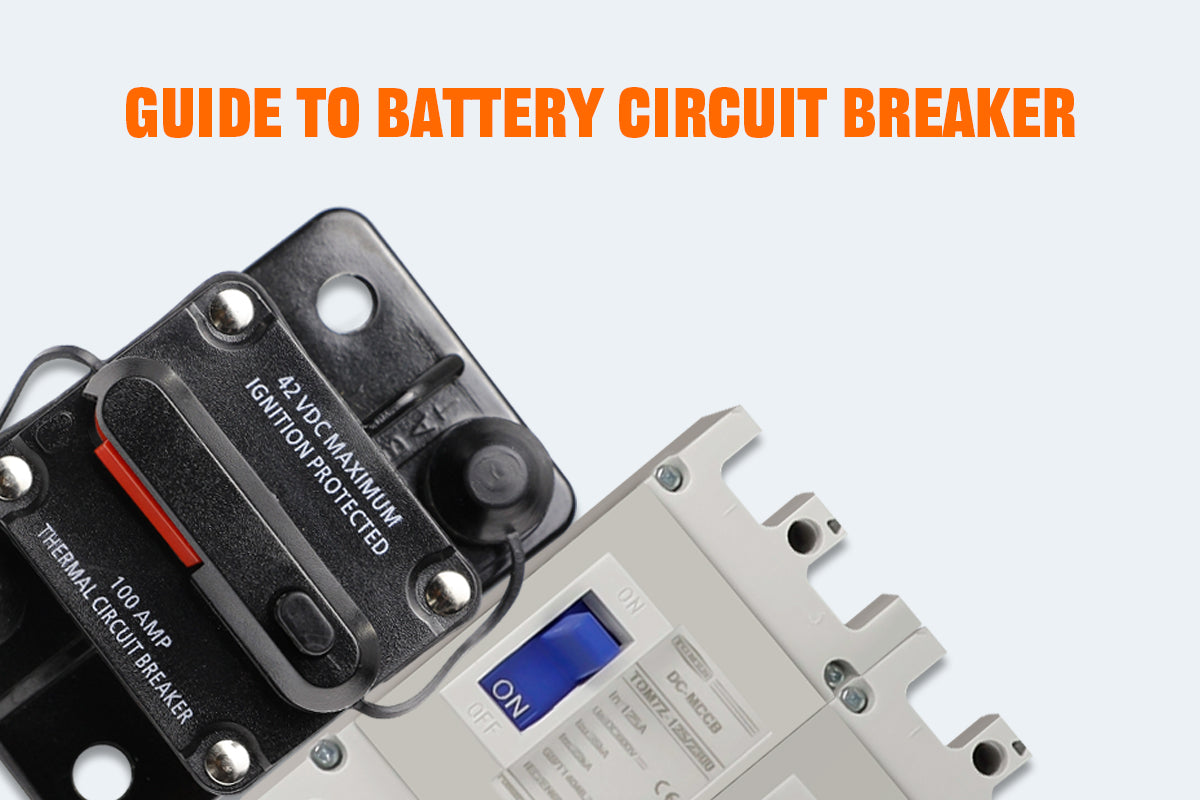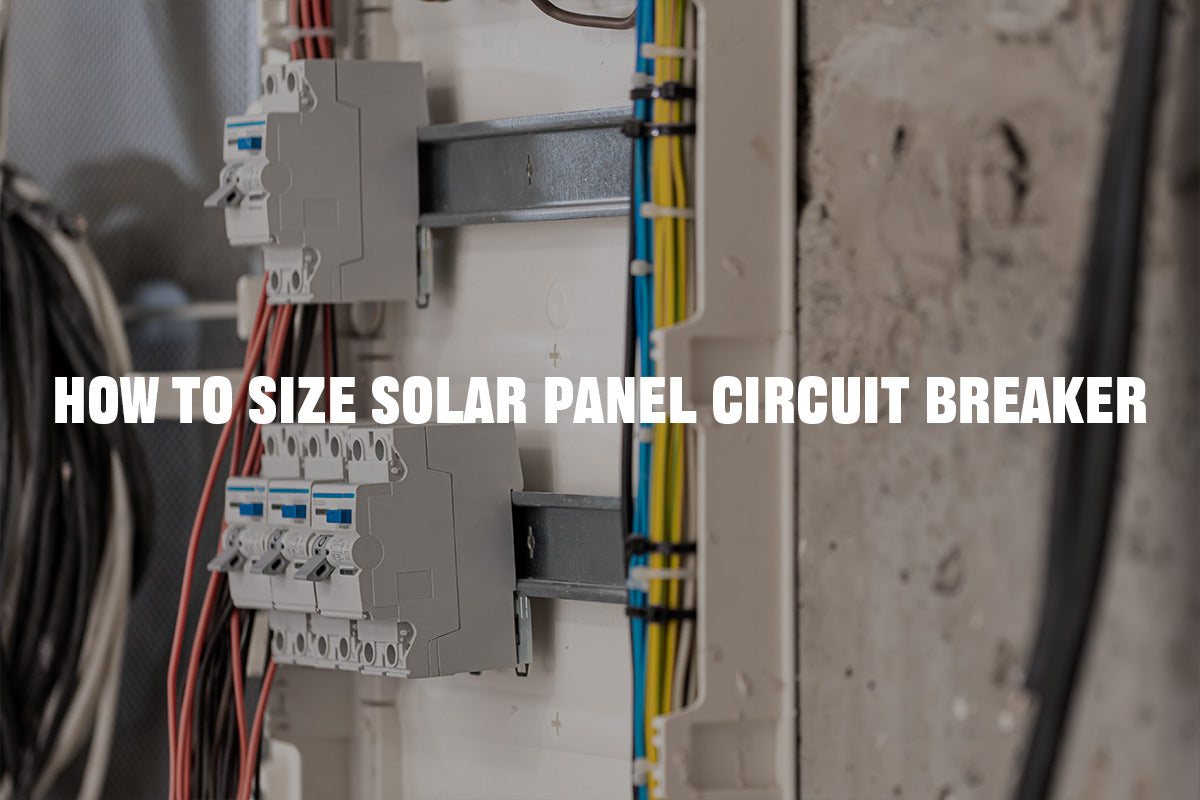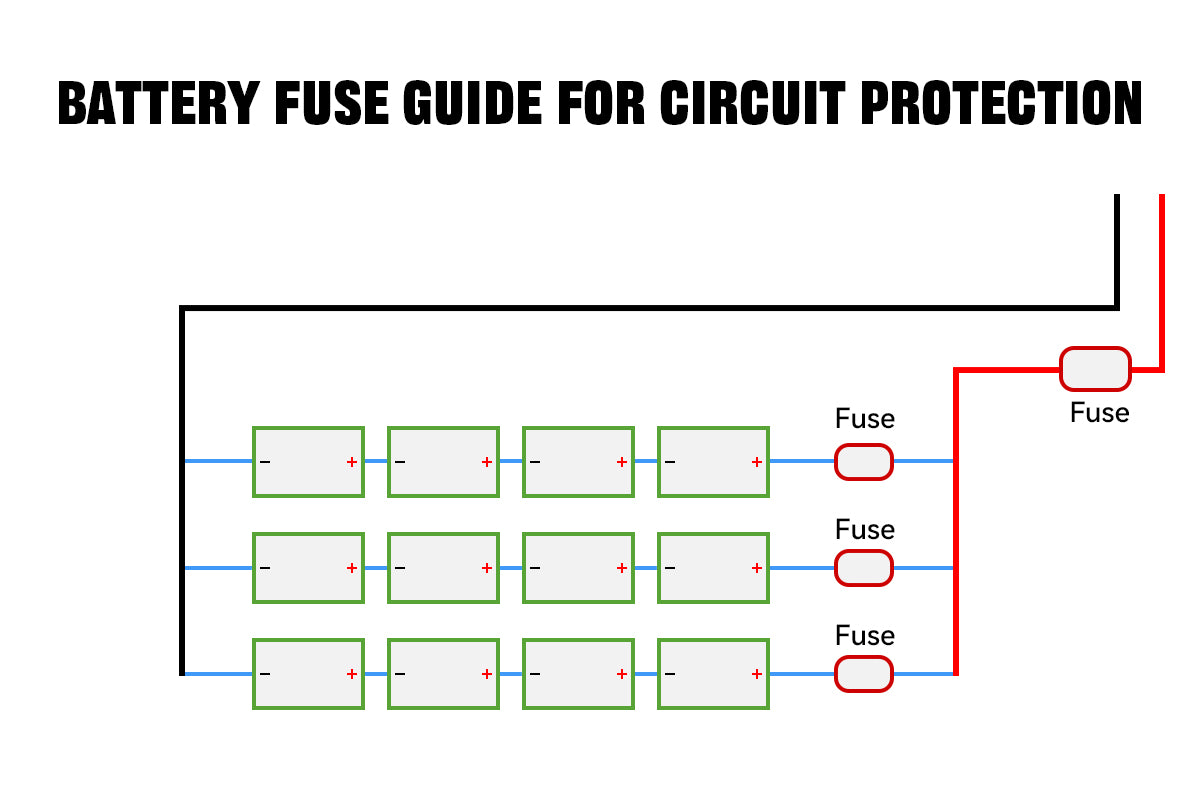A battery circuit breaker is a safety device designed to automatically interrupt the flow of electrical current when it exceeds safe limits. In a solar, off-grid, or backup power system, it protects your battery bank, inverter, and wiring from damage caused by short circuits, overloads, or faulty equipment.
Unlike fuses, which must be replaced after blowing, circuit breakers can be reset manually, making them more convenient for long-term use and maintenance.
This guide explains why circuit breakers matter, where to install them, and how to size them correctly.
Do I need a circuit breaker for my solar battery
Yes, the inclusion of a circuit breaker in a solar battery setup is not only advisable, it is a fundamental component of a safe and functional electrical system, particularly in solar and off-grid applications where safety and reliability are paramount.
A battery circuit breaker is a protective electrical device with specially designed arc-quenching mechanisms, used to interrupt the flow of DC current when it exceeds safe levels.
Its primary function is to protect the battery, inverter, wiring, and other connected components from damage caused by short circuits, overloads, or faults, which could otherwise lead to overheating, burned wiring, damaged battery terminals, or even fires in the worst-case scenario.
Where do you install a circuit breaker
For most solar power system need at least two critical breaker for battery, placements: one between the battery and inverter, and another between the charge controller and battery.
To maximize safety, the breaker should be always installed as close as physically and practically possible to the battery's positive terminal.
If the breaker is placed too far from the battery, the section of wire between the battery and the breaker remains unprotected. During a fault, this unprotected cable may overheat, melt its insulation, damage the battery terminals, or, in the worst-case scenario, start a fire.
By installing the breaker near the battery, the length of unprotected wiring is minimized, significantly reducing the risk of thermal damage and improving overall system safety.
In some configurations, particularly in mobile systems such as RVs, vans, or boats, a third circuit breaker may be installed just before the DC load panel. This additional breaker serves to isolate and protect loads powered directly from the DC battery system, such as LED lights, USB ports, fans, and other appliances.
What size circuit breaker for battery
Choosing the right circuit breaker size ensures your system runs safely and reliably. A breaker that's too small will trip too often; one that's too large may not protect your system during faults. Proper sizing balances safety with practical operation.
Circuit breaker between charge controller and battery
The current flowing between the charge controller and the battery is regulated by the controller and primarily depends on the solar input. While it may fluctuate with changes in solar irradiance and environmental conditions, it remains relatively stable and predictable.
According to the National Electrical Code (NEC) Article 690.8, continuous currents in photovoltaic systems must be protected by overcurrent devices rated at 125% of the maximum current.
Therefore, to determine the minimum circuit breaker size for the connection between the charge controller and the battery, you should multiply the charge controller’s rated output current by 1.25.
For example, with a 60amp charge controller, multiplying by 1.25 gives 75 amps. You would then round up to the next standard breaker size, which is 80 amps.
Circuit breaker between battery and inverter
The current between the battery and the inverter is significantly higher than on the charge controller side because the battery operates at a much lower DC voltage (typically 12V, 24V, or 48V). To deliver the required power to AC loads, more current must flow from the battery.
Sizing the circuit breaker for this connection requires a more calculated approach, taking into account both the power demand and the inverter's efficiency. The breaker size can be determined using the formula:
Breaker Amps = Inverter Power in Watts ÷ Battery Voltage ÷ Inverter Efficiency × 1.25
For a 12V battery powering a 2000W inverter at 91% efficiency, a circuit breaker rated around 180 amps is recommended. For a 1500W inverter with the same efficiency, a breaker rated around 135 amps is suitable.
Note:
Always follow the manufacturer’s recommendation when available. The factor used in the following calculation is based on NEC standards and may vary depending on your country or local regulations. If no specific rule applies, a 1:1 ratio is advisable.
Can circuit breaker serve as battery disconnect
Yes, a properly rated DC circuit breaker can serve as a manual battery disconnect switch, but it should only be used in essential situations.
Circuit breakers are protective devices, not intended for frequent manual switching. Repeated operation can lead to wear or damage over time.
For regular disconnection, it’s better to use a dedicated battery disconnect switch. Just be aware that not all disconnects are rated for switching under load. In such cases, you must turn off any upstream breaker before operating the switch.



